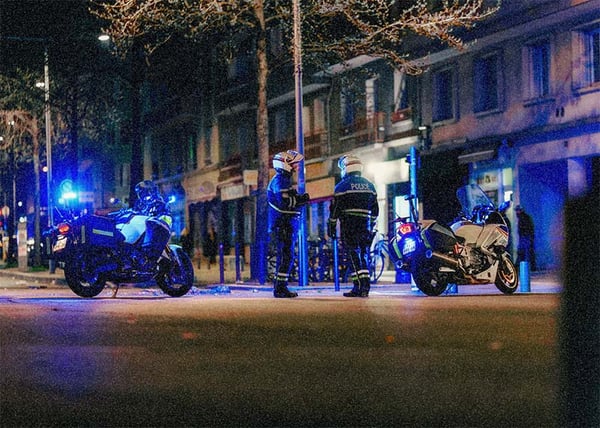The Cinderella policy
Your city has youth violence problems? Some European cities now try an innovative solution... banning young people from being outside.

The city of Nîmes in southern France is internationally known for its arenas, but nationally, it's infamous for its gun violence. Seven shootings took place in several neighbourhoods riddled with drug trafficking over the course of just one month – 2 people died, at least 6 got seriously injured, including victims under 18 years-old.
To protect them, the mayor has resorted to a simple solution: ban anyone under 16 from being outside without adult supervision between 21 and 6 in affected areas for fifteen days.
Nîmes is far from being an exception: several cities have tried the same strategy since the 2000s. Béziers, a neighbouring town, introduced a curfew in March 2024 for anyone under 13 years old (now extended to under 16s), starting at 23. Cagnes-sur-mer, close to Monaco, has had one since 2005, also for preteens.
All are limited in time and place due to legal provisions, and are usually aimed at the town centre and poorer neighbourhoods. Minors found outside are brought back to their parents, who can be fined depending on the constituency. On top of protecting minors, the goal is to curb youth violence, which the right and far-right argue is on the rise.
And yet, resorting to curfews is more of a communication strategy than an efficient social policy, unless paired with other measures targeting the root causes of crime.
Economic insecurity, a lack of perspective, overcrowded flats, overworked parents, and a glorification of drug trafficking as an 'easy way out' are just some of the many causes of youth crime. Successive governments have promised to ”restore authority” among teenagers, but heavy policing often only amplifies violence.
While the number of minors taken to court for murder, homicide, and fatal battery has nearly doubled between 2017 and 2023, so has police violence and their subsequent violence, like the 2023 riots following the shooting of 17-year old Nahel Merzouk.
And then there's the drug gangs. In the Marseille region, the nerve centre of French drug trafficking, the number of minors implicated in a drug case has shot up by 430% in the last decade, and by 238% for homicides (or attempted).
While most of these structural issues won't change overnight, there are some immediate fixes. A three-year-long local experiment found that better education helped minors overcome misleading myths about drug trafficking. Similar educational programs are suggested for parents, and providing disenfranchised youth with better mental health services is proven to reduce crime.
Yet change must happen on a larger scale. While some suggest alternatives to crackdowns, such as community policing, the French prison system often fails to rehabilitate youth and re-victimises them after the fact.
For now, there are curfews. While there's no plan to adopt them nationally, the handful of constituencies that have adopted them have received support from the Ministry of Justice. In mid-July, the minister even suggested imposing a temporary curfew on all minors arrested for walking around with knives. Still, French nights are a long way away from going teen-free.
